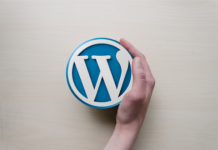Remote patient monitoring is a coordinated system that collects, stores, and evaluates health information via digital technologies that transmit information from the home to a provider or a care facility. The health data allows physicians to monitor changes in patients’ vital signs and make recommendations or offer instructions when necessary. RPM programs collect common physiological data: blood pressure, heart rate, weight and vital signs.
Remote patient monitoring was a foreign concept to most people before 2020, but healthcare organizations have increasingly adopted this service since the outbreak of COVID-19. However, most people don’t understand remote patient monitoring and tend to associate the service with other terms such as telehealth. Below, we look at the differences between remote patient monitoring and telehealth.
What’s the difference between RPM and telehealth?
The definition of remote patient monitoring may seem straightforward, as shown above. Still, there lies some confusion about the concept and its relation to telehealth. RPM is a subcategory of telehealth that mainly allows patients to gather health-related information and send it to healthcare professionals. On the other hand, telehealth refers to telecommunication technologies such as electronic mail systems and facsimile machines used to collect and transfer patient data. It is essential to note this distinction for coding and billing purposes.
How does remote patient monitoring work?
First, a healthcare provider identifies a patient’s condition(s) and establishes if it is possible to manage them remotely. They then launch a remote patient monitoring program that facilitates collecting a wide range of patient health data such as weight and blood pressure. A provider determines how effective RPM is for a patient based on the types of health data that RPM can capture.
After the patient consents to the service, the provider can now order or prescribe RPM. Most RPM devices need to be electronically connected, which can be achieved through cellular networking. Once the device is set, it collects and transmits data from patient to provider. A healthcare provider assesses the information and offers guidance or instructions based on the results. The ease of remote patient monitoring for patients depends on the device’s design. Complex devices can be a challenge, and patients may require assistance to use the technology.
Common RPM device options
Remote weight monitoring devices
These devices are configured for patients. All the patient needs to do is stand on the scale, which displays their weight and automatically transmits the data to the server, which shows up in real-time on the provider’s portal. Weight monitoring devices are essential for patients with chronic health conditions such as congestive heart failure, liver cirrhosis, and obesity-related issues such as type 2 diabetes, stroke and heart disease.
Previously, patients would record their weight in their diaries and take the journals during regular visits. While keeping records helped monitor weight at the time, it would cause negative outcomes in patients’ health. For example, a slight change in weight for patients with congestive heart failure may indicate that the condition is worsening. In such cases, providers may need to take action, such as adjusting medication or arranging for an in-person visit.
Blood pressure monitor
Blood pressure monitors are typically cuffs that hypertension patients wear on the wrists to improve disease management. They provide accurate blood pressure readings, essential for monitoring and treating hypertension or high blood pressure.
Blood glucose monitor
Controlling blood sugar levels is essential for patients with diabetes since they tend to experience no symptoms until glucose levels are either too high or low. For this reason, the use of a remote monitor can be the difference between life and death. Uncontrolled diabetes can result in serious complications affecting the eyes, kidneys, heart and nerves.
What are the benefits of remote patient monitoring?
Better access to health care
Remote patient monitoring bridges the barrier of access by providing care to patients regardless of place and time. For this reason, patients in rural areas can quickly get quality healthcare services. RPM eliminates the need to worry about travel expenses or time off work since you can see your doctor from the comfort of your home or office. Patients also get to connect with specialists they would otherwise not have access to.
Promotes patient engagement
Remote patient monitoring allows patients to understand their health better, making it an excellent patient engagement strategy. When patients understand their conditions, they take active steps to adhere to care plans, including taking the prescribed medications. They also become responsible for their health, resulting in positive health outcomes. Providers may also offer health education materials that further improve their engagement.
Combats clinical staff shortages
The benefits of remote patient monitoring apply to patients and healthcare providers. RPM allows clinicians to optimize care delivery, allowing them to triage each patient based on close to real-time data. It also allows providers to offer services to patients virtually, reducing the burden of over-scheduled in-person appointments or visits.
Remote patient monitoring has improved the well-being of patients with chronic conditions and has also transformed the work atmosphere for healthcare providers.















